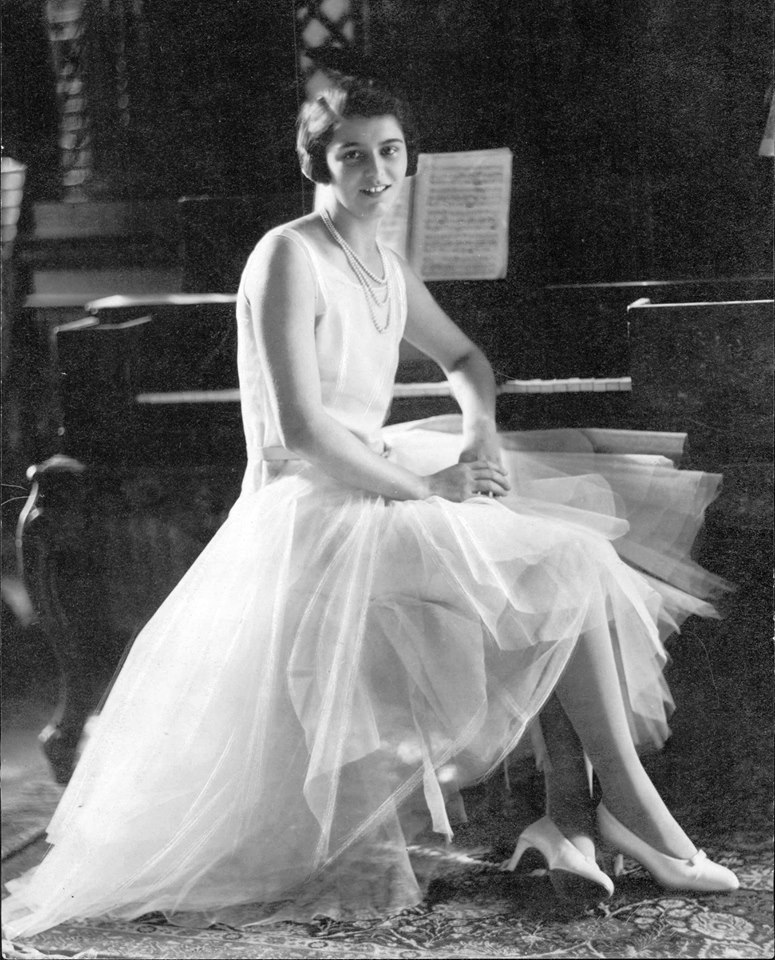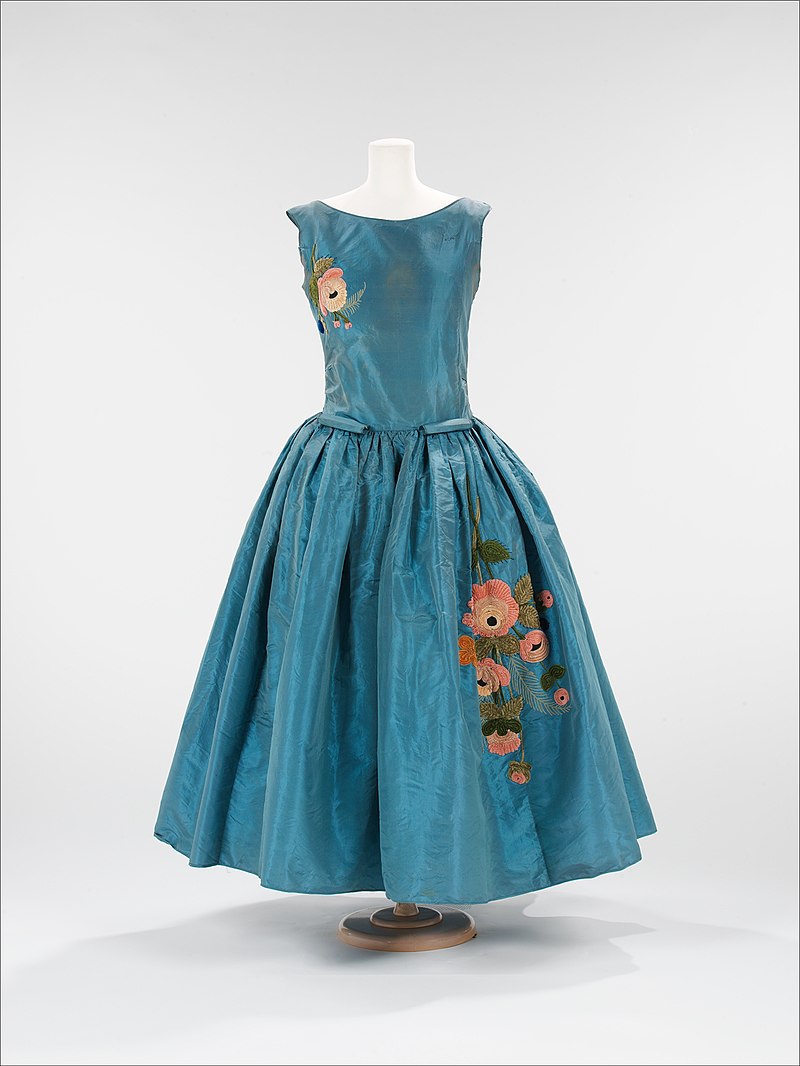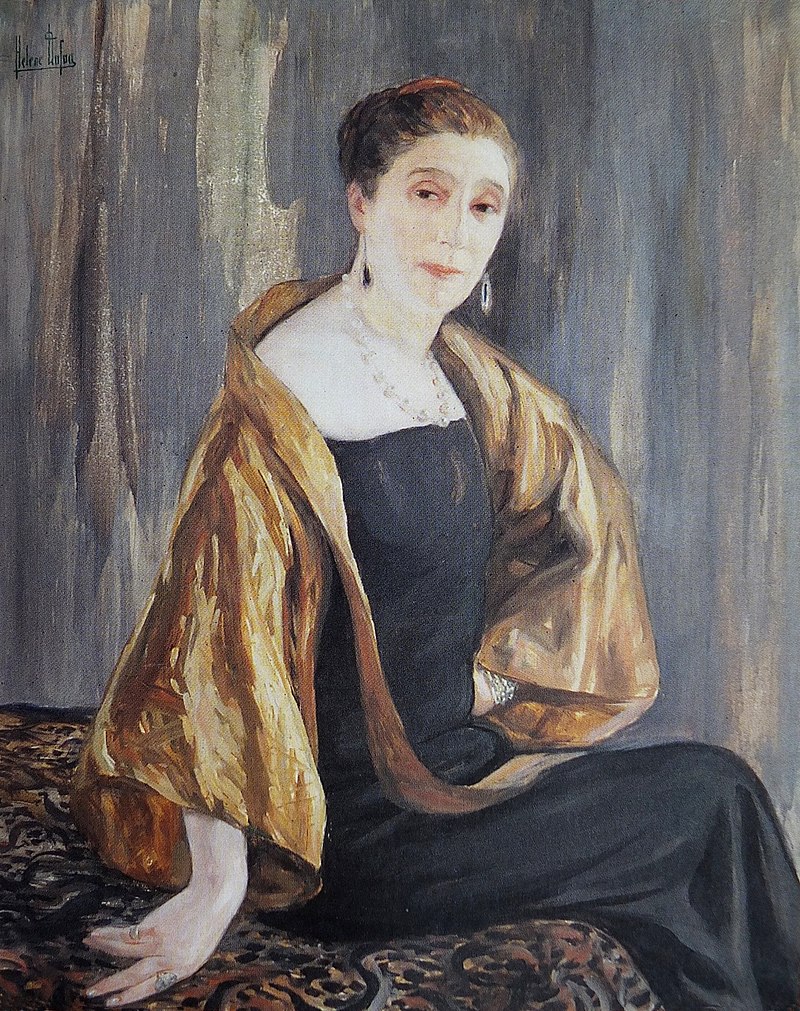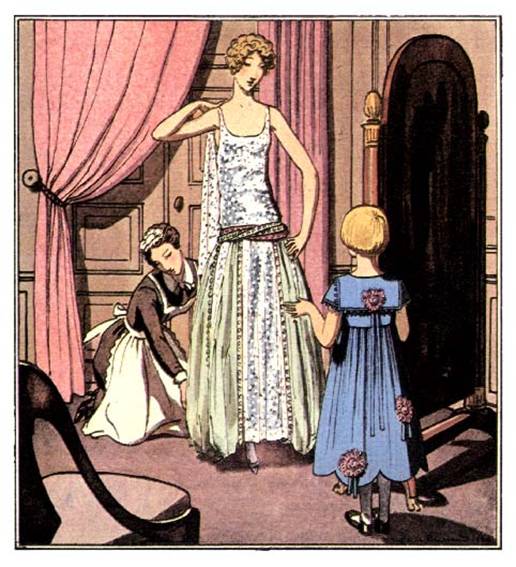The image of the flapper, the cutting-edge woman wearing a short, straight dress, and the bob haircut represent the roaring Twenties fashion, typically defined as a modern decade. Most people associate 1920s fashion with the short, sparkly, black, beaded flapper dress. This figure of women’s fashion throughout this period has been cemented in the minds of the masses thanks to pop culture powerhouses such as The Great Gatsby and Chicago, among others.
However, another fashion with a much more romantic appeal became popular during the same decade. In fact, during the 1920s and 1930s, women could partake in looking back to previous centuries while wearing their robes de style. Continue reading to find out more about this gown.
What Is the Robe de Style Dress?
What could a woman do in the 1920s if she didn’t want to wear the flapper’s boxy chemise silhouette? She most likely chose the softer, more classic robe de style look popularized by French designer Jeanne Lanvin. A robe de style dress was fitted on top and had a fuller, longer skirt on the bottom.
A few skirts were so full that side panniers, petticoats, or hoops were required. The dress’ overall fullness was flattering on almost any age or figure. This made it a good option for younger Jazz Age ladies who were too young for the flapper dress craze and (amusingly) their mothers, who might have preferred a more forgiving style.
The skirt’s fullness is due to built-in panniers at every hip. The built-in wire structures, sculpted like small baskets, horizontally extend the line of the dress, emphasizing the hips.
This look is reminiscent of the 18th century when European and American women commonly wore panniers. This historical reference was noted by American fashion writers, who regularly alluded to the robe de style as a “period style” or “quaint” gown.
Robe de Style Dress Features
Robes de style dresses were commonly made of silk taffeta, satin, velvet, and a sheer, lightweight fabric dubbed organdy. The bodice’s shape was adaptable, as it could be fitted or cut straight. The waist usually fell to the middle of the hip.
The gowns were frequently sleeveless. You could add a tulle band to soften a scooped neckline. More opulent styles had a plunging backward bodice or a single, one-shoulder strap.
The structure of the robe de style is simple because the silhouette does not necessitate precise shaping and fitting of the garment. The sewn flowers of pink silk add visual interest. Trailing vines and leaves made of chenille thread and clear beads complement the flowers.
The bodice is adorned with numerous faux crystals that have been applied. This type of ornamentation is common in robes de style, which is typically made of a solid-color fabric embellished with ribbon, beads, or embroidery in striking, eye-catching designs. Taffeta was a popular fabric choice because its inherent stiffness emphasized the skirt’s bell-like shape.
Even with their elegance, robe de style dresses were also entertaining. They allowed and encouraged women to twirl their skirts on the dance floor. The dresses may be flirty without being overtly sexy and wearable without being overly casual.
Jeanne Lanvin and the Robe de Style Dress
Jeanne Lanvin became known in the 1920s for the feminine robe de style with full pannier hips, an alternate solution to the tubular trend of Art Deco fashions and their vast array of silk tassels and beads. She was not alone; in the style confusion that followed the end of World War I, many designers attempted to resurrect romantic pre-war fashions for evening wear.
Lanvin’s only contribution to modernization was to flair the fullness of the voluminous skirts from the hip, as waistlines lowered to hip level in the 1920s, and designers such as Molyneux, Chanel, and Patou popularized simple chiffon dance gowns with deep décolletés. Her style suited the war-weary population’s nostalgia.
Lanvin is credited with refining this look, but she did not invent it. She took it from the 17th and 18th centuries and updated it.
Lanvin’s ability to understand what women find appealing is demonstrated by the fact that she only started making dresses when people asked her to make them what she was producing for her daughter. Nonetheless, she was not afraid to deviate from popular trends. Day, house, and afternoon varieties of the robe de style were popular around 1921-1923, alongside straight-fit chemise dresses, which were less full at the hips and did not require padded undergarments.
Designers used ruffles, apron treatments, pleats, and layers of net or tulle to add fullness to the hips. The waistband was wide and didn’t always sit at the natural waist or empire line but could also drop at the natural waist or empire line.
Lanvin’s clothing line expanded to include items for the whole family, including men, but she always aimed for youthfulness, not merely just for the young. Perhaps this is a lesson for modern clothing designers who believe that trends are only for teenagers and that everyone else is limited to shapeless sacks of fabric and muted grays masquerading as dresses.
Lanvin informed Vogue in 1934 that she acts on instinct and acts on impulse. Her instincts were spot on for women of the 20s looking beyond flapperdom.
However, Jeanne Lanvin wasn’t the only well-known designer of robes de style. These silhouettes were also created by the House of Worth, Callot Soeurs, Paul Poiret, and Boué Soeurs. A huge array of robes de style could be worn all day during different occasions, not just in the evening.
The main feature of these dresses was the fabric implied in their making and the various embellishments they featured. This was also the cause of their decline. Indeed, World War II and the resulting fabric shortages and restrictions influenced fashion trends toward a less frugal look.
The quintessential “flapper” dress—an extremely short, sleeveless shift dress with beading or fringe—is featured prominently in popular images of 1920s dress. The robe de style dress was also popular in the twenties, but it was considered a classic and a rather safe choice. It was deemed suitable for women of all ages. The flapper shift was more avant-garde and was marketed to younger, more fashion-conscious women.
The robe de style has a strong character. Fashions come and go, but it never goes away. So go check out these modern trends for wearing the Roaring 20s glamour today.




